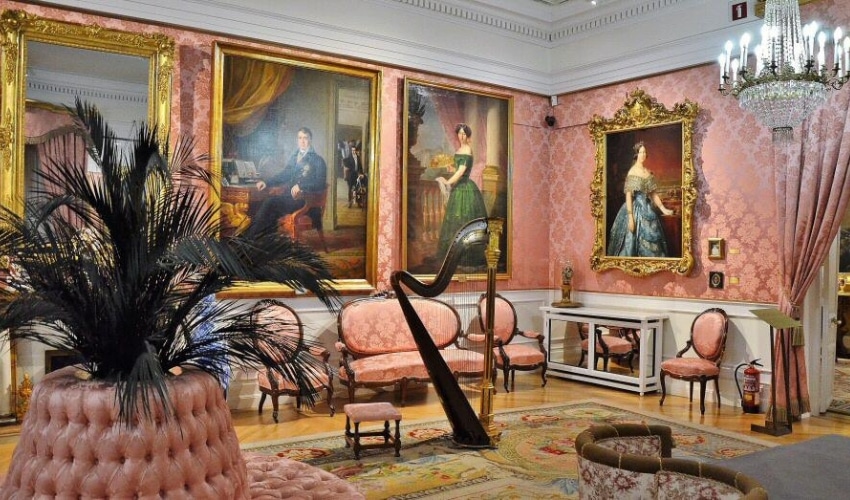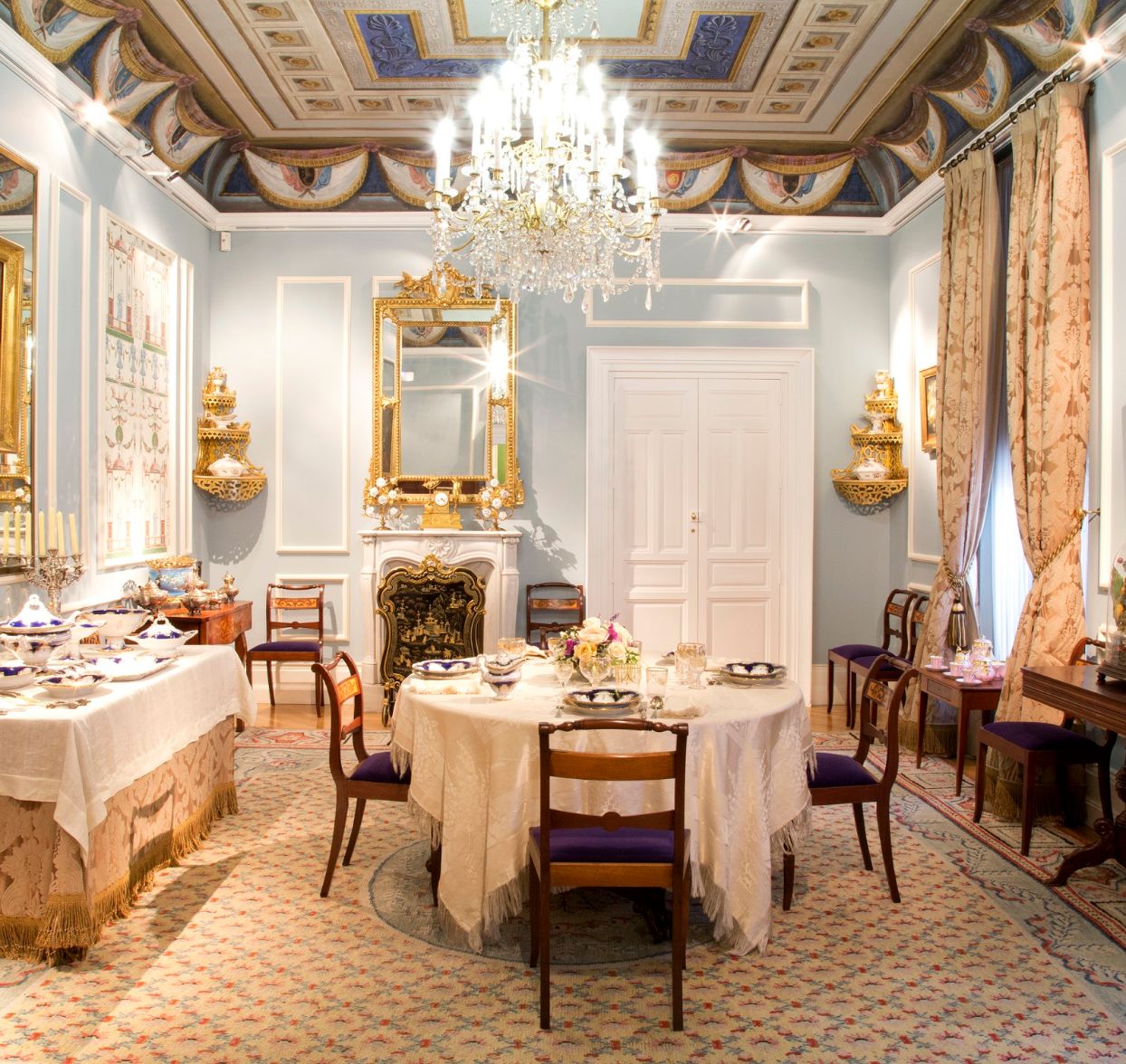
Everyone knows about the Prado Museum in Madrid, but did you know that there is another museum in the same city that is just as fascinating? The Museo del Romanticismo is an art museum that exhibits some of the most famous pieces from the Romantic era.
The museum was created to offer the public the opportunity to view works of art that are not regularly exhibited, but also serves as a center for research on Romanticism. The museum has more than 60,000 pieces in its collection and hosts an annual program of exhibitions featuring contemporary artists who draw inspiration from Romanticism.
Table of Contents
How much does it cost to enter the Museum of Romanticism?
The entrance to the Museum of Romanticism costs 3 euros. It is a great museum. It has a lot of interesting exhibitions and things to see, and it is a good place to go with friends or family. The museum is located near Plaza España, which makes it easy to get to if you are staying in Madrid. Also, the staff is very friendly.
Who created the Romantic Museum in 1924?
The Museo del Romanticismo was created by Benigno de la Vega-Inclán in 1924. It is dedicated to art and other artifacts that were produced during the Romantic period of Spain's history. The museum's collection includes paintings, sculptures and manuscripts by artists such as Francisco de Goya y Lucientes, José de Ribera and Bartolomé Esteban Murillo.
How much does it cost to enter the Cerralbo Museum?
The Cerralbo Museum is one of the most important museums in Spain, and it is right here in Madrid. Admission is inexpensive (1 to 3 euros), but we recommend that you make a donation if you have funds: the museum is run by volunteers and donations are its main source of funding. If you want to make a donation, there is a donation box near the door.
The Cerralbo Museum is a hidden gem in Madrid. It is one of the oldest museums in Spain and is housed in an incredible palace. The museum has a collection of over 50,000 pieces from all over the world, but if you're looking for a bit of history, check out their Egyptian collection. There are also great pieces from China and Japan.
What type of portrait was very successful in romanticism?
Romanticism is an artistic movement that emerged at the end of the 18th century. It was characterized by a focus on the emotional and subjective experience of the artist, who was seen as a hero or heroine. Romanticism is often associated with the idea of the "artist as hero," in which artists are seen as creating works for the benefit of humanity rather than for personal gain.
Romanticism was very successful in portraiture because it allowed artists to express their own emotions through their portraits. For example, Caspar David Friedrich's "The Wanderer on the Sea of Fog" shows an anguished man standing alone over a misty landscape.
The subject is clearly distraught and isolated, but also gives the sense that he might be contemplating something more important than his own problems: how to save humanity from itself. This portrait conveys the sense that our emotions can be overwhelming and universal at the same time, making it appealing to viewers today as well as during the heyday of Romanticism.
What colors are used in romanticism?
Romanticism is an artistic, literary and musical movement that prioritizes emotion over rationality. It is characterized by an emphasis on nature, emotion and imagination.
The colors used in Romanticism are usually soft and muted, such as pastels, lavenders and pinks. They can also be bright and vibrant. The color scheme of a Romantic painting usually includes many different shades of one or two colors mixed together.
A common theme in Romantic art is nature: paintings often depict flowers, trees or other plants.
What is the most important painting of Romanticism?
The most important painting of Romanticism is The Raft of the Medusa, by Théodore Géricault. It depicts the survivors of a shipwreck in 1816, when the French frigate Méduse ran aground on a sandbank in the Atlantic Ocean off Senegal. The captain abandoned his ship and crew, leaving them to their fate; only fifteen survived. Géricault's painting depicts their struggle for survival and the horrible conditions they endured.
The painting is considered so important because it illustrates several romantic themes: it features ordinary people rather than members of royalty or high society; it depicts suffering; and it makes use of dramatic lighting effects that make the scene seem more intense and emotional than it could be.
Which painters stood out in romanticism?
Some of the most important painters of Romanticism are
- Alfred Sisley (1839-1899): Sisley is known for painting landscapes and nature scenes, which were very popular during this era. His works are considered one of the best examples of Romanticism's use of color to depict emotions.
- Vincent van Gogh (1853-1890): Van Gogh painted his famous "The Starry Night" during his stay in France. This painting is an example of how he used color and brushstroke to express emotion in his works.
- Edgar Degas (1834-1917): Degas often depicted dancers in his paintings, usually at night or in dimly lit rooms with only a few light sources illuminating them. These paintings show how Degas used light to create drama and emotion.
Which painter founded Romanticism?
Romanticism was an artistic, musical and literary movement that began in the late 18th century. It was a reaction against the Enlightenment ideas of reason and nature that had dominated the previous century. Instead of focusing on rationality and scientific principles, Romanticism emphasized emotion and imagination.
The painter who founded Romanticism was J. M. W. Turner (1775-1851). He often painted landscapes with dramatic effects of light and color to capture the intense emotions he felt for nature. His paintings were often based on his own travel experiences in Europe and Britain, as well as his imagination.
Which works belong to Romanticism?
Romanticism is a literary, artistic, and intellectual movement that originated in Europe in the late 18th century. It emphasized emotion and imagination as a guide to truth and opposed the use of reason alone to determine value. Romanticism rejected the scientific rationalization of nature and society, which had been important to the Enlightenment, and instead emphasized the power of nature over human beings.
The movement had its roots in 18th century Germany, but soon spread throughout Europe. The British Romantic poets William Wordsworth and Samuel Taylor Coleridge, along with the German writers Johann Wolfgang von Goethe and Friedrich Schiller, are considered among the most important figures of this period.
The term "romantic" was first used by Friedrich von Schlegel in 1797 to describe his theory that ancient history was a series of cycles between epochs of humanity characterized by different styles of thought: idealistic (Greek), realistic (Roman), tragic (medieval), comic (Renaissance). He asserted that Romantic art represented an era in which man felt himself to be more than a mere creature whose sole purpose was to serve God or nature; rather, he saw himself as someone who could shape his own destiny through his own thoughts and actions.
FAQ
What is Romanticism?
Romanticism is an artistic and literary movement that began in the late 18th century and lasted until about 1850. The movement was characterized by an emphasis on emotion, imagination, nature, and the supernatural, and a rejection of the classical ideals of order, reason, and formality. It also emphasized human uniqueness and individual freedom.
What was the influence of Romanticism on art?
Romanticism's main impact on art was to encourage artists to express their inner feelings through their works. This meant that they often portrayed scenes from nature or historical events with vivid colors and emotions.
Who participated in romanticism?
Many writers participated in Romanticism, such as Lord Byron, Percy Shelley, John Keats and William Blake. Other artists associated with Romanticism include William Turner, J. M. W. Turner (no relation), John Constable, Joseph Mallord William Hogarth, John Constable and Thomas Gainsborough (who painted scenes from The Four Seasons).
What are some examples of romantic literature?
Some examples of romantic literature are The Prelude by William Wordsworth; Ode to Psyche by Percy Shelly; The Prelude by Wordsworth; To Autumn by John Keats; Ode to a Nightingale by Keats; The Rhymes of the Ancient Mariner by Coleridge; and The Rime of the Old Mariner by Coleridge.
Kimo Wegner, offers objective reviews and useful recommendations, His expertise in digital marketing and WordPress allows him to present information in an engaging way. Connect with Kimo at LinkedIn y MejorHogar.es

